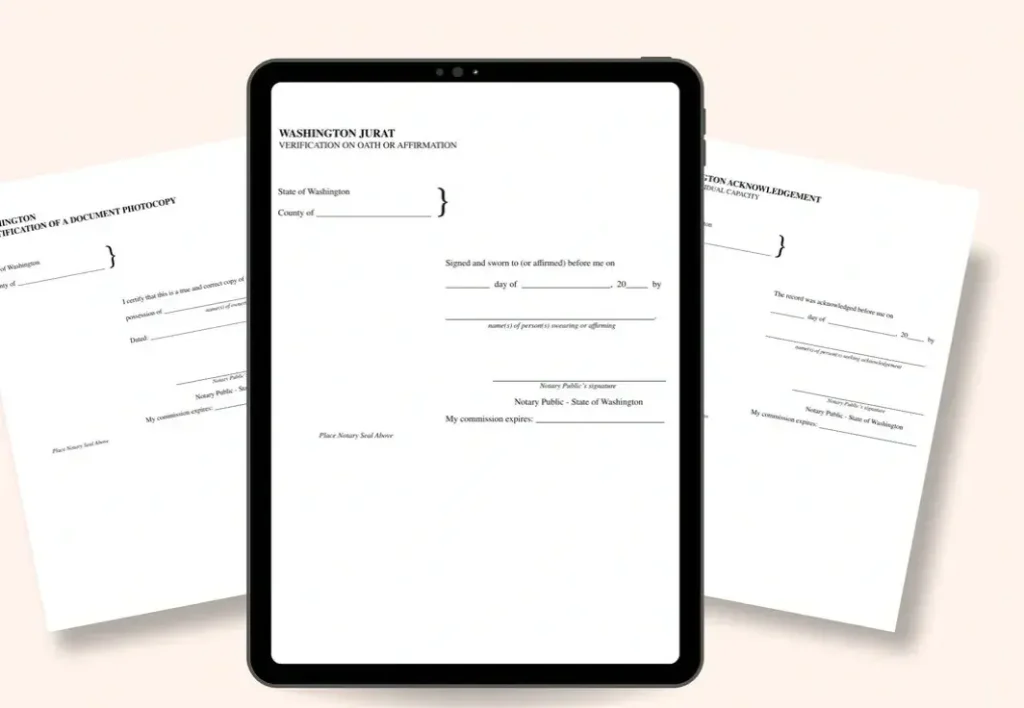Introduction
Notaries public play a crucial role in the authentication of various legal documents. Two common notarial acts they perform are acknowledgments and jurats. While these terms may sound similar, they serve distinct purposes and are used in different situations. In this blog, we’ll clarify the differences between acknowledgments and jurats and provide guidance on when to use each notarial act.
Understanding Acknowledgments
An acknowledgment is a notarial act in which a person (the signer) formally declares that they have signed a document voluntarily and that the signature is their own. Here’s how it works:
- The signer presents the document to the notary.
- The notary identifies the signer and ensures they are signing the document willingly.
- The notary notarizes the document, typically by placing their seal and signature on it.
- An acknowledgment is often used for deeds, contracts, real estate documents, and other legal instruments.
When to Use Acknowledgments:
- Documents with Signatures Not Made in the Notary’s Presence: Acknowledgments are appropriate when the document signer has already signed the document before presenting it to the notary. The notary’s role is to confirm the identity of the signer and ensure they are acknowledging the document willingly.
- Real Estate Transactions: Deeds, mortgages, and other real estate documents often require acknowledgments to be notarized. This helps establish the authenticity of the signatures and the validity of the transaction.
- Legal Contracts: Contracts and agreements may also require acknowledgment notarization to verify the identities of the parties involved and the voluntariness of their signatures.
Understanding Jurats
A jurat, on the other hand, is a notarial act where the signer makes a statement under oath or affirmation, and the notary certifies that the statement was made. Here’s how it works:
- The signer appears before the notary and makes a statement or swears an oath related to the content of the document.
- The notary administers the oath or affirmation and verifies the identity of the signer.
- The notary notarizes the document by placing their seal and signature, along with a statement confirming the administration of the oath or affirmation.
- Jurats are commonly used for affidavits, sworn statements, and any document that requires the signer to make a formal declaration.
When to Use Jurats:
- Sworn Statements: Jurats are essential for documents in which the signer is making a formal declaration under oath or affirmation. This could include affidavits, witness statements, or documents that require the signer to confirm the accuracy of the content.
- Certification of Truthfulness: Jurats provide a higher level of assurance that the statements in the document are true and have been made under penalty of perjury. This is crucial in legal proceedings and sworn statements.
- Affidavits: Affidavits are often notarized with a jurat because they involve a formal sworn statement. This is common in legal matters and court proceedings.
Conclusion
Understanding the differences between acknowledgments and jurats is essential for ensuring the proper notarization of your documents. Acknowledgments are used when the signer has already signed the document, while jurats are used for sworn statements and oaths made in the presence of the notary. Choosing the correct notarial act ensures the legality and authenticity of your documents and statements, making them suitable for their intended purposes. When in doubt, consult with a notary public to determine the appropriate notarial act for your specific needs.


 and then
and then